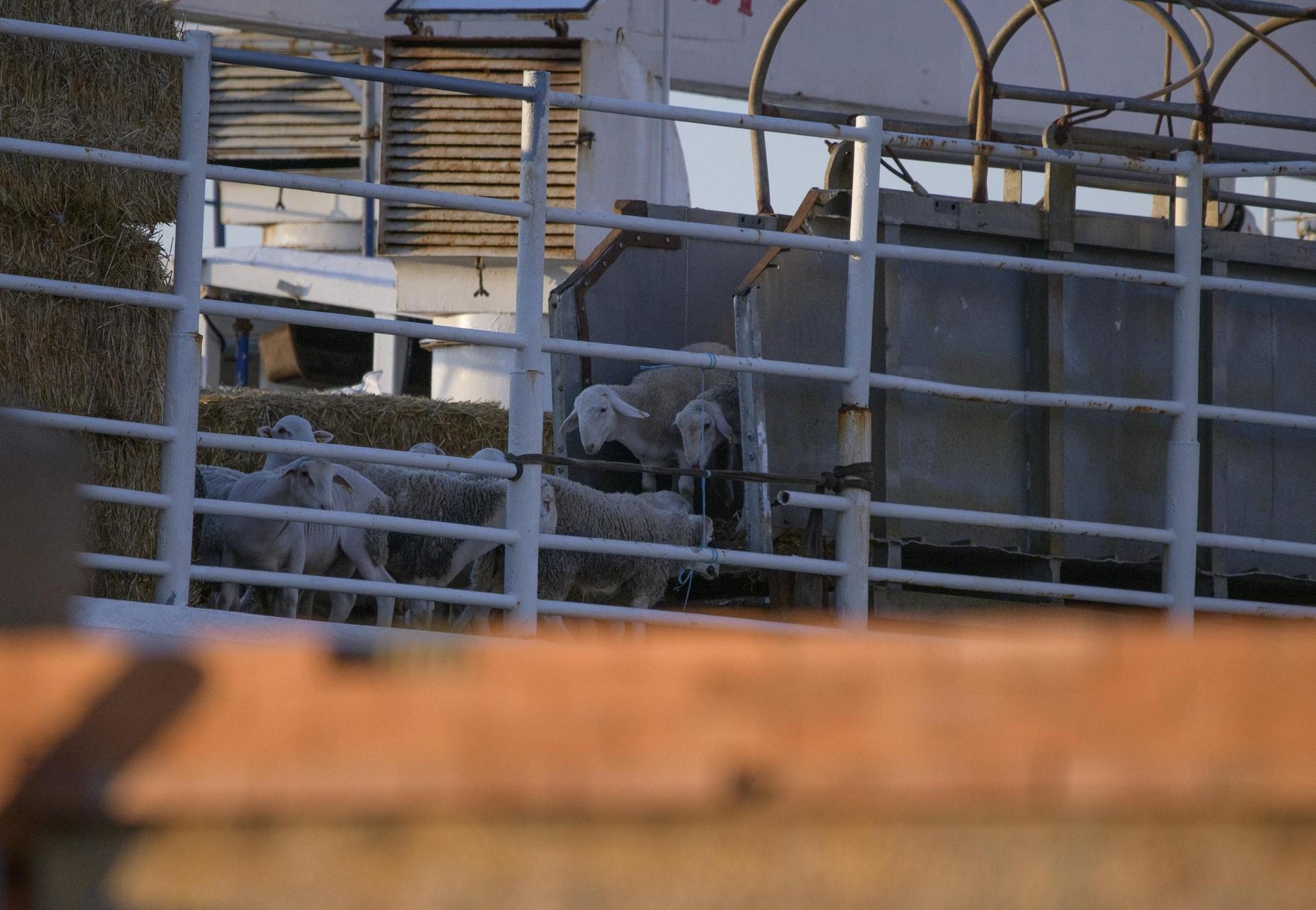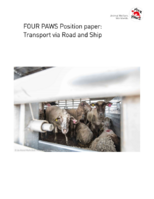
Live Animal Transport by Sea
The long and torturous journeys as animals are shipped to their death
The journeys are long, overcrowded, and animals fall sick, are injured or die during transport. When they are loaded and unloaded in ports, many animals endure cruelty – in third countries and within the EU. Every year, 4.5 million cattle, pigs, sheep and goats are exported from the EU to third countries. Mainly sheep and cattle are transported by sea to Libya, Jordan, Saudi Arabia, Lebanon, Egypt, Eritrea, Algeria, Georgia and other countries. Transporting animals overseas is cruel and torturous, and we must finally put an end to this suffering.
Around 3 million sheep are estimated to have been exported by sea from Romania alone in 2020. Germany exports tens of thousands of animals to third countries by road and by sea every year, mainly cattle; it also exports calves to Spain to be fattened there before some of them are further embarked on vessels for third countries. Many more EU countries export animals via sea in similar ways.
Tragedies at sea keep repeating: thousands of sheep and hundreds of cattle had to wait and suffer on vessels when the Suez Canal was blocked in spring 2021; 2,600 cattle were killed after being stranded at sea for over three months on the vessels “Elbeik” and “Karim Allah” from December 2020 until March 2021; more than 14,000 sheep drowned when the Queen Hind capsized in November 2019 close to the port of Midia, Romania.
Animals transported from the EU to third countries are often embarked on ships that don’t even meet the minimum legal requirements for animal welfare. Most livestock vessels are very old, converted cargo vessels, and over half of them pose a high risk to maritime safety.
Numerous investigations in EU and third-country ports reveal the same thing: animal cruelty is common when handling animals for transportation.
Nobody knows how many animals are injured or die during transports to third countries or in the first few days after arriving at the destination. Once the animals have crossed the EU border, no one is responsible for reporting their health status or mortality.
FOUR PAWS calls for a ban on all live animal transports to third countries, by sea and by land. If at all, only carcasses and/or genetic material (semen) should be exported.
The many problems
Substandard vessels
- Most animals are transported on substandard vessels. According to a recent report of the European Commission (DG Sante), 54% of the vessels in use are considered high to very high maritime safety risk, and at least 4 EU countries have approved vessels that do not comply with EU animal welfare legislation.
- The interior fittings of livestock vessels are unsuitable for live animals, resulting in animals often injuring themselves.
- Many vessels are inadequately ventilated. Thus, the ammonia levels on cattle transports are so high they cause eye irritation and sometimes blindness.
What the animals must endure at sea
- Temperature limits are often violated at transports by sea, and in the hot summer months, hundreds of animals die on poorly ventilated vessels.
- There is no transport time limit for sea journeys. Mostly they last for days or weeks.
- If there is a change of plans like a refusal of anchoring at the third country, the animals are trapped and forced to stay on the vessels for months.
- For the duration of the journey, the animals have to stand in their own excrements and have no dry litter where they can lie down.
- The animals have to compensate for the swaying of the vessels permanently. Many get seasick.
- Livestock vessels are overcrowded and there are no vets on board. This makes it impossible to treat ill or euthanise animals. Dead animals are often thrown overboard.
- After arriving in the port of destination, the animals are embarked on trucks and transported further. These trucks are generally not in line with EU legislation.
Lack of responsibility and transparency
- No one is responsible for the health of the animals on board until they have reached the destination.
- There is no veterinarian on board who can treat the animals.
- There is no routine reporting on the animals' health status or mortality during sea transports or upon arrival in third countries.
Animal cruelty in ports
- Often, the ramps for loading and unloading on vessels are too steep, causing animals to injure themselves. Sometimes the animals fall into the water and are pulled out by ropes. Sick animals are lifted off the ship with a crane, hanging by one leg.
- Investigations in EU and third-country ports have revealed that animal cruelty is common: Animals are often beaten, their tails are twisted, and they are electrocuted for prolonged periods on the snout or other sensitive areas. This happens mainly when an animal is injured and cannot walk.
Slaughter in third countries
- Slaughter practices in third countries are horrifyingly cruel. The slaughter is carried out without prior stunning and includes practices such as the gouging out of eyes, pulling up the animals by their hind legs, cutting the tendons. Also, the animals’ throats are cut with repeated cuts. The death struggle can last 15 to 30 minutes.
The current political context
The EU could be responsible for up to 80% of the global trade in live farm animals.1 In light of these figures, addressing how animal transports are regulated in the EU becomes crucial to tackling animal welfare problems. The European Parliament has established a Committee of Inquiry on live animal transports to investigate violations and shortcomings of the EU Regulation 1/2005 that will also inform the revision of the Regulation.
The solution
When tragedies happen at sea, animals are left alone in their suffering. Even when such tragedies don’t happen, and “business” runs as usual, animals endure unacceptable and cruel conditions during sea transports. This must end! Third countries importing live animals from the EU also import meat from the same countries – proving that transporting animals over long distances is unnecessary.
FOUR PAWS demands a ban on the export of live animals outside the EU, a ban on long-distance transports over eight hours and a ban on the transport of live animals on ships.
This video may be disturbing to viewers. Watch now.


